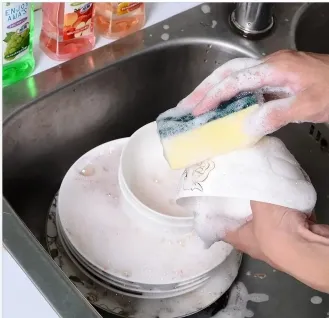Sodium tripolyphosphate (STPP) plays a crucial role in soap making, particularly in enhancing the performance of detergents and liquid soaps. Understanding why STPP is a preferred ingredient in soap manufacturing and how it contributes to better cleaning efficiency can help you appreciate its value in everyday products. This article explains the benefits of using STPP in soaps, how it improves formulations, and why it is essential in the industry.
1. What Is Sodium Tripolyphosphate (STPP) and Its Chemical Composition?
Sodium tripolyphosphate (STPP) is a sodium salt of triphosphoric acid, widely used in various industrial applications. Its chemical formula is Na5P3O10, and it is known for its ability to sequester ions like calcium and magnesium, which are common in hard water. This feature makes it ideal for use in soap making, where it improves the cleaning power of soaps and detergents.
STPP acts as a water softener and an emulsifier in soap formulations. Its ability to bind with minerals and prevent them from interfering with the surfactant action of soaps ensures that cleaning products perform better, even in hard water conditions.
2. Why Is STPP Used in Soap Making?
STPP plays an important role in soap making by improving the efficiency of cleaning agents. When used in soap formulations, STPP binds with calcium and magnesium ions found in hard water. These ions often interfere with the soap’s ability to lather and clean effectively, but STPP prevents this by forming soluble complexes with these ions.
In addition, STPP helps soaps to maintain their pH levels and enhances the texture and stability of soap products. This is particularly beneficial in commercial soap production, where maintaining consistency across large batches is crucial for product quality.
3. The Role of STPP in Liquid Soap Formulations
Liquid soaps benefit significantly from the inclusion of STPP. In liquid soap formulations, STPP helps to maintain a smooth texture and prevents the soap from separating or becoming cloudy. Its ability to stabilize formulations ensures that liquid soaps remain effective over time, without degradation in performance.
STPP also improves the cleaning action of liquid soaps by preventing mineral build-up on surfaces or fabrics. This makes it an essential ingredient in both household and industrial liquid soaps, particularly in areas with hard water.
4. STPP vs. Sodium Carbonate in Soap Making
Sodium carbonate, also known as washing soda, is another common ingredient in soap making. Like STPP, sodium carbonate acts as a water softener by precipitating calcium and magnesium ions. However, sodium carbonate can leave residues on surfaces, which may affect the quality of cleaning. STPP, on the other hand, binds to these ions without forming residues, resulting in a cleaner wash.
While sodium carbonate is less expensive than STPP, STPP offers superior performance, especially in liquid soap formulations and products designed for hard water environments. For high-end and professional soap formulations, STPP is often preferred over sodium carbonate due to its enhanced efficiency.
5. How Does STPP Work in Synthetic Detergents?
In synthetic detergents, STPP acts as a builder that boosts the detergent’s cleaning power. It works by sequestering metal ions that can reduce the effectiveness of surfactants. This makes STPP an essential component in commercial detergent formulations, where achieving maximum cleaning efficiency is a priority.
STPP helps detergents maintain their effectiveness even in hard water, which is crucial for industrial and household cleaning. It also prevents soil redeposition, ensuring that dirt particles remain suspended in water and are fully rinsed away during the washing process.
6. The Impact of STPP on Water Treatment in Soap Production
Water quality plays a significant role in soap production, and STPP aids in treating water by softening it. Hard water can hinder soap performance, leading to inefficient cleaning. By sequestering the calcium and magnesium ions in hard water, STPP ensures that soaps perform optimally.
This is particularly important in areas with naturally hard water, where soap formulations without STPP may struggle to produce satisfactory results. STPP ensures a consistent cleaning experience, regardless of water quality.
7. STPP and Polyphosphates in Soap Making: What’s the Difference?
Polyphosphates are a group of compounds used in soap and detergent making, but STPP is often preferred due to its specific advantages. Unlike some polyphosphates, STPP has a strong ability to bind calcium and magnesium ions without leaving behind residue. This makes it particularly effective in liquid and powdered soap formulations.
While other polyphosphates may offer cost advantages, STPP’s performance in maintaining the stability and effectiveness of soap products makes it a top choice for manufacturers looking for high-quality results.
8. STPP and Its Interaction with Phosphoric Acid in Detergent Production
Phosphoric acid is sometimes used alongside STPP in detergent production to enhance the effectiveness of cleaning agents. Phosphoric acid can help in adjusting the pH levels of soap, making it more effective in specific cleaning conditions. When combined with STPP, phosphoric acid helps to improve the overall efficiency of the detergent formulation.
This combination is particularly useful in industrial cleaning products, where the cleaning agents need to work in challenging environments. By balancing the pH and improving ion sequestration, STPP and phosphoric acid create a powerful detergent solution.
9. Environmental Considerations of Using STPP in Soap Making
One of the primary concerns about using STPP is its environmental impact. Phosphates, when released into water systems, can contribute to the problem of eutrophication. This is a process where excess nutrients, like phosphates, lead to the rapid growth of algae, which depletes oxygen in the water and harms aquatic life.
To address this concern, manufacturers are working on reducing phosphate levels in their formulations or using more eco-friendly alternatives. However, due to its effectiveness, STPP continues to be used in many soap and detergent products, with efforts focused on minimizing its environmental footprint.
10. How to Choose the Right STPP for Soap and Detergent Formulations
Choosing the correct STPP depends on the specific requirements of the soap or detergent product. STPP comes in various forms, including anhydrous and hydrated versions, each suited for different applications. Anhydrous STPP is often used in powdered soap formulations, while the hydrated form works better in liquid soaps.
When selecting STPP for soap making, manufacturers should consider factors like water hardness, the type of soap being produced, and environmental regulations. Working with a reliable supplier can help ensure that the STPP used meets the necessary quality and performance standards.

